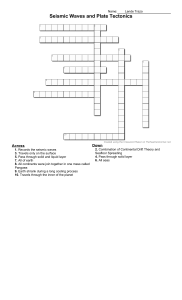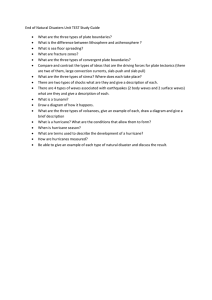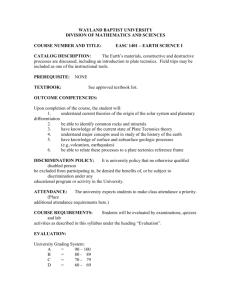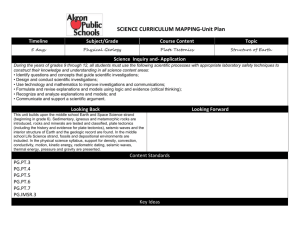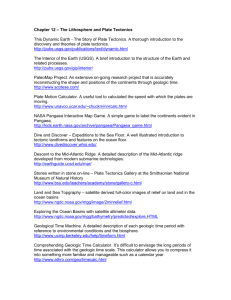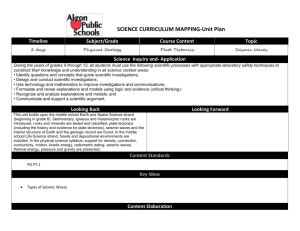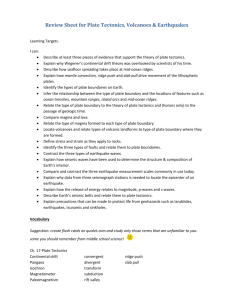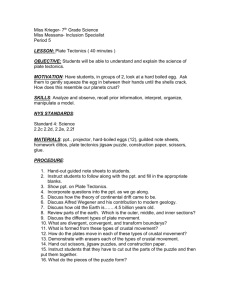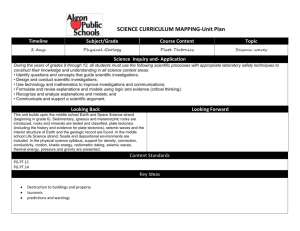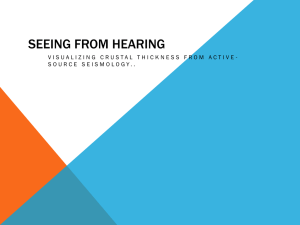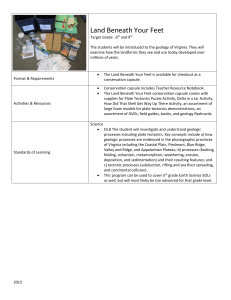What you need to know unit C final
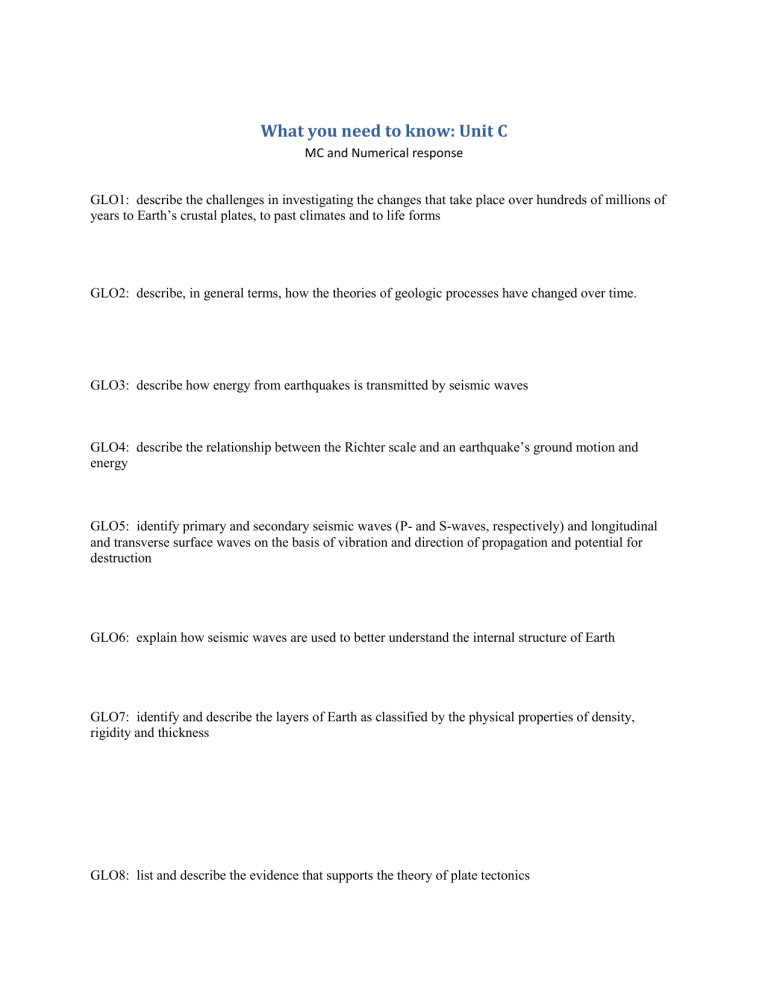
What you need to know: Unit C
MC and Numerical response
GLO1: describe the challenges in investigating the changes that take place over hundreds of millions of years to Earth’s crustal plates, to past climates and to life forms
GLO2: describe, in general terms, how the theories of geologic processes have changed over time.
GLO3: describe how energy from earthquakes is transmitted by seismic waves
GLO4: describe the relationship between the Richter scale and an earthquake’s ground motion and energy
GLO5: identify primary and secondary seismic waves (P- and S-waves, respectively) and longitudinal and transverse surface waves on the basis of vibration and direction of propagation and potential for destruction
GLO6: explain how seismic waves are used to better understand the internal structure of Earth
GLO7: identify and describe the layers of Earth as classified by the physical properties of density, rigidity and thickness
GLO8: list and describe the evidence that supports the theory of plate tectonics
GLO9: explain how convection of molten material provides the driving force of plate tectonics and explain the tentativeness of the explanation that radioactive decay is the source of geothermal energy for plate tectonics.
GLO10: explain how knowledge of radioisotopes, radioactive decay and half-lives are used to estimate the age of minerals and fossils
GLO11: describe common types of fossilization as direct evidence of evolution and describe the significance of the fossil record in Canada’s Burgess Shale
GLO12: explain how sedimentary rock layers along with fossils can provide evidence of chronology, paleoclimate, evolution and mass extinctions
GLO13: describe, in general terms, the major characteristics and life forms of the four eras: Precambrian,
Paleozoic, Mesozoic and Cenozoic
GLO14: explain why oxygen became a significant component of Earth’s atmosphere after the evolution of plants and chlorophyll.
GLO15: describe the geologic evidence for repeated glaciation over large areas of Canada and in their local area
GLO16: explain how ice cores from polar icecaps provide evidence of warming and cooling in the past hundred thousand years
GLO17: explain, in general terms, how changes to Earth’s climate and how mass extinctions could be caused by changes or variation in the following: Earth’s orbit around the sun, the inclination of Earth’s axis, solar energy output, Earth’s geography due to crustal movement, volcanic activity, ocean currents, atmospheric composition or asteroid impact.
